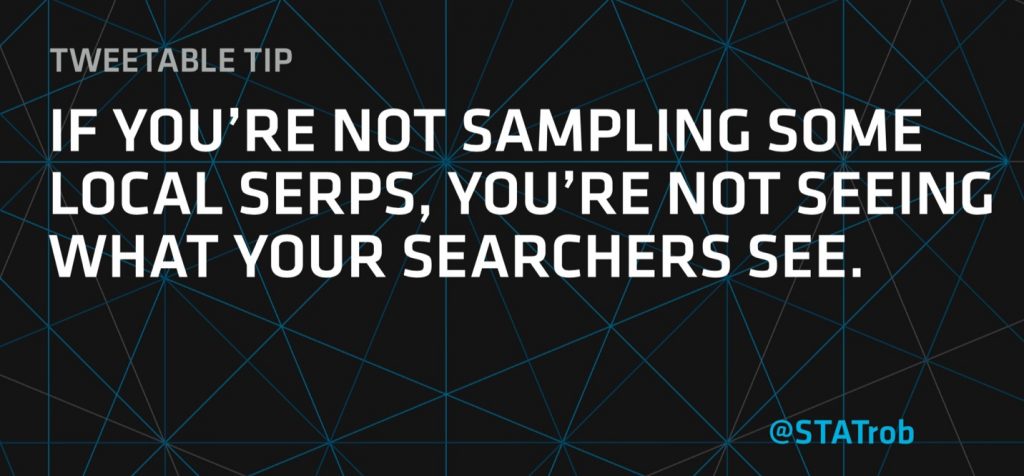SEO Localization and Intent
In July, I attended MozCon 2018, a digital marketing conference in Seattle WA. During these 3 days I was able to meet and learn with marketers, SEOs, reps from digital agencies, and business owners to discuss the latest trends in the digital marketing space. Over 3 days and 25 presentations these concepts seemed to dominate the conversations: Localization, Intent, and Entities. (You can find all the decks here) As time has passed, these three concepts have continued to influence the way I approach digital marketing and SEO.
Localization and Intent
We all hear that local search is growing, but by how much? On Google’s Q3 earnings call on October 25th 2018, their CEO Sundar Pichai said this:
I wouldn’t underestimate the focus we have on local. Just to give you a sense, local mobile searches are growing faster than just mobile searches overall, and have increased by almost 50% in the last year. (Source)
Google is a publicly traded, for-profit company that has built its revenue model on giving the best search return that matches that user’s intent. Rob Bucci, CEO of STAT Search Analytics (recently acquired by Moz) gave a presentation of an extensive study of what factors trigger a local map pack and impact organic ranking. He included this tweet from Google’s Search Liaison Danny Sullivan:
FYI, personalization of results is very light. Most people searching in the same language and same location will see largely the same things. Location and language are far more influential about why results differ.
— Danny Sullivan (@dannysullivan) May 15, 2018
Localization of search is directly relevant to Google’s ability to determine exactly what you are looking for in any search. Traditionally local search has meant the surfacing of map packs in the local rankings like this:
“search term + geomodifier”
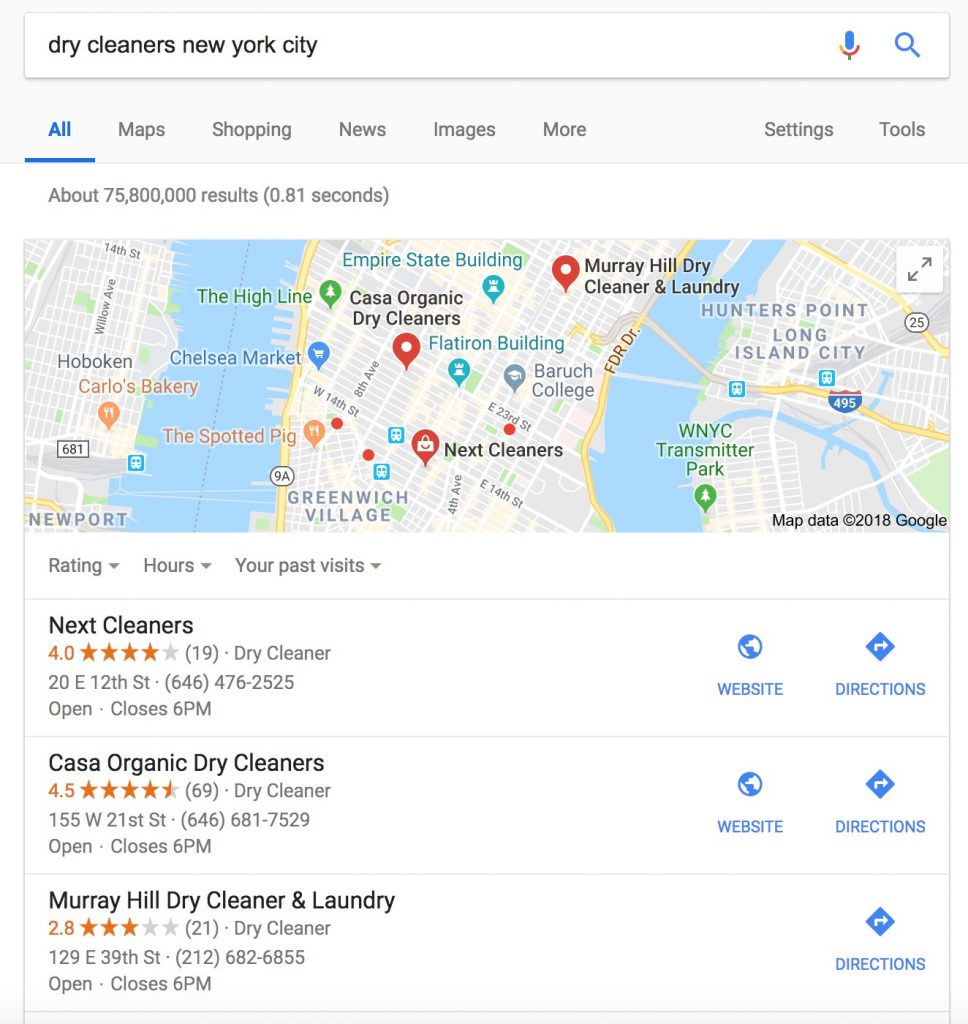
Using localization, Google can give now give specific local results without needing a geographic term at all:
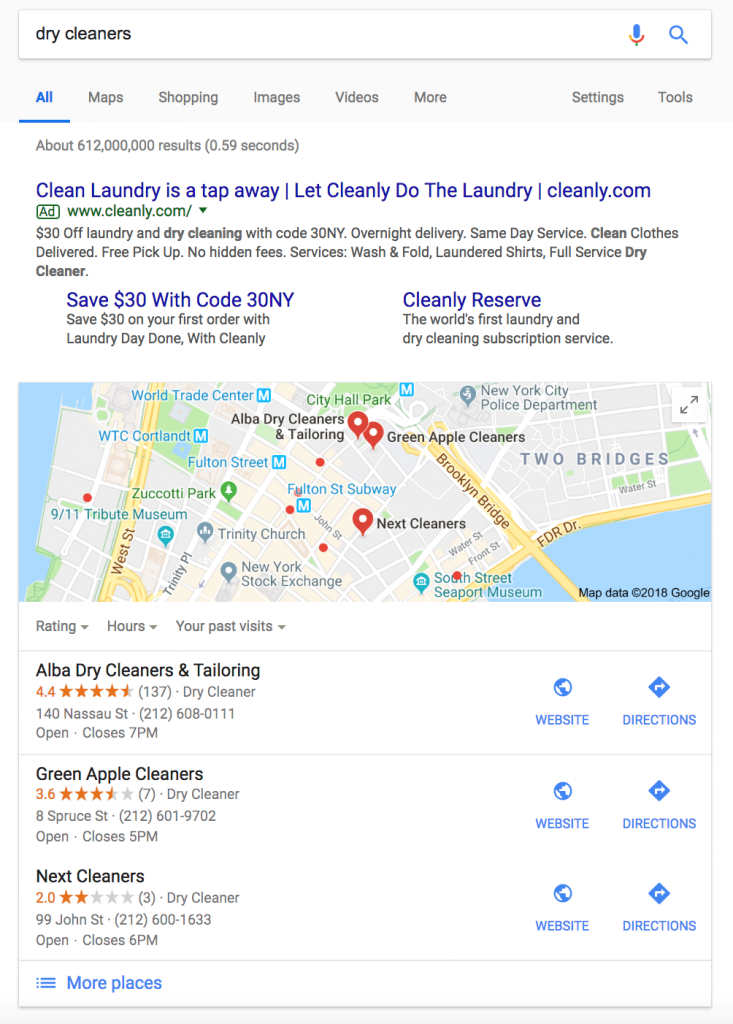
Localization today impacts more than just the map returns. Search terms now can not only bring up not only a local pack without a geo-modifier, but different organic returns depending on the searcher’s location.
Here’s an example using the generic term “bear” in New York, which Google interprets as an informational search:
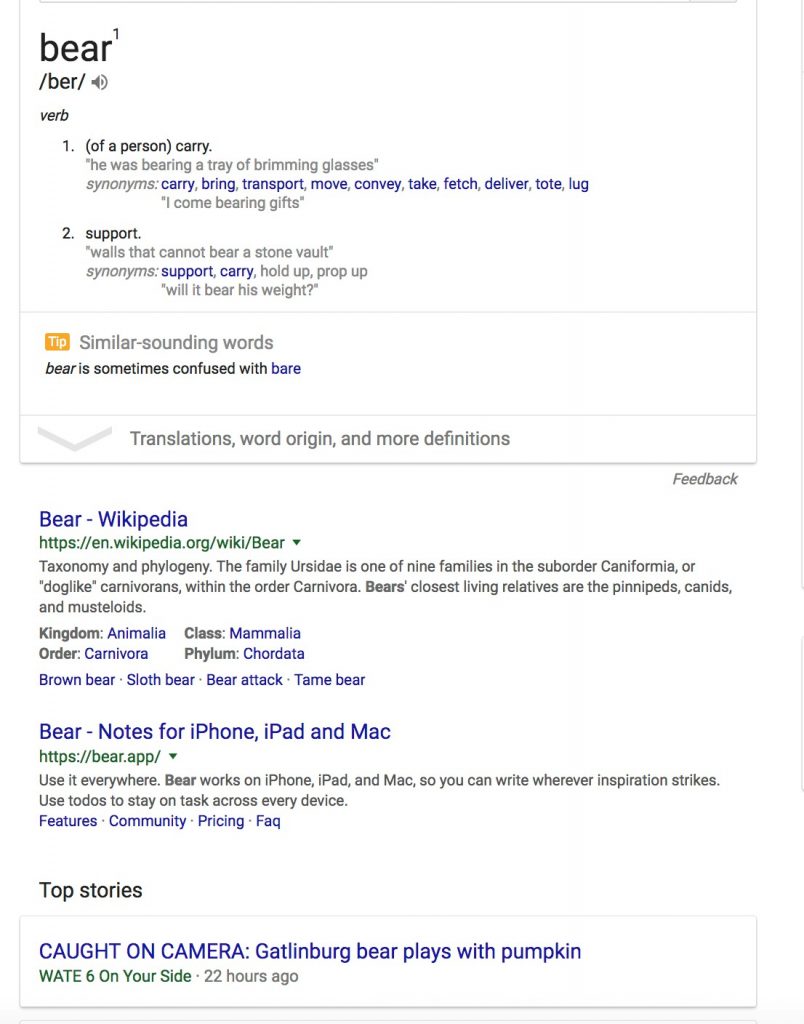
However, for the term “bear” in Chicago, we see the website for the Chicago Bears inserted in the search returns, just in case you are searching for Chicago’s football team:
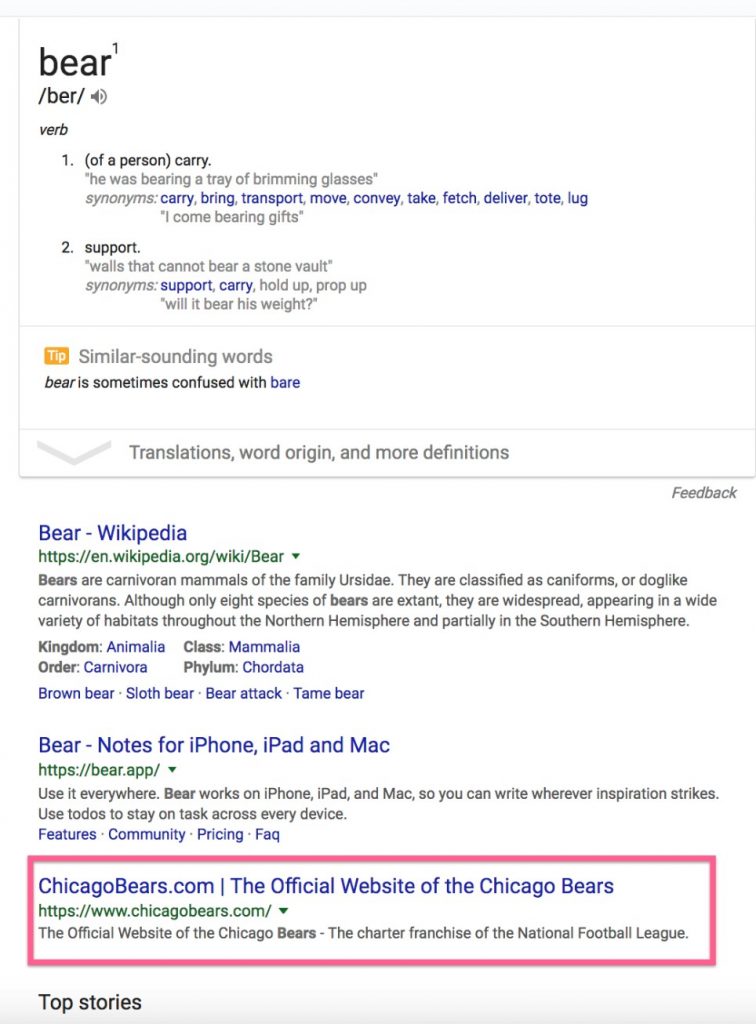
What has this meant for me as an SEO practitioner? This tweet really says it all:
It surprises a lot how many SEOs rarely directly look at the SERPs, but do that only through “the ? “ of a tool. Shame! Look at them & youl’ll:
1) see clearly the search intent detected by Google
2) see how to format your content
3) find On SERPS SEO opportunities pic.twitter.com/Wr4OYAcmiG— Gianluca Fiorelli (@gfiorelli1) October 23, 2018
In order to determine localization and intent we have to go out and look at search returns in the “wild”. To quote Rob Bucci @STATrob:
We need to run searches for terms that we want to rank for in different locations to determine the kind of content we need to build to rank for these terms. By doing so we can find opportunities that we didn’t know existed. Tom Capper at Distilled outlined this strategy in his presentation “Local SEO without Physical Premises”. At OpenMoves, we have seen that for some of our e-commerce clients, we need to develop localized product landing pages to compete with the local products in a given target market. We wouldn’t have known this without understanding localization and intent.
Entities
The concept of entities as it relates to search has been around for some time. Google introduced the concept of the Knowledge Graph in this video from 2012, which is still one of the explanations of the concept I have seen. Over time we have become familiar with the Knowledge panel in search as the display of the entities that Google associates with a brand, business or person.
In her presentation “Mobile First Indexing or a Whole New Google, Cindy Krum, CEO of Mobile Moxie, described the evolution of Mobile Indexing as really Entity-First Indexing. The real world is full of people, places and things that aren’t websites and can’t be crawled by any bot. In a world of voice assistants, “Entity-first indexing allows Google to surface the right content in the right context” or as we have discussed, the right content for the user’s Intent. Local SEO’s have long understood the concept of entities when we optimize a business’s Google My Business listing. The listing itself is an entity that Google’s algorithm associates with a business. A website is also an entity of a business. Because of that relationship, we can influence the ranking on maps of a Google My Business listing by making changes to a website and while never touching the listing itself.
What do these entities look like today for large brands in search? Here is the knowledge panel for the Chicago Bears. In it we see an image, a website, social profiles, people and physical places in the real world that Google has associated with the entity “Chicago Bears”. We can also see an opportunity for larger brands to claim their knowledge panel to influence these results at the bottom of the panel (The Chicago Bears should really get in touch with OpenMoves!)
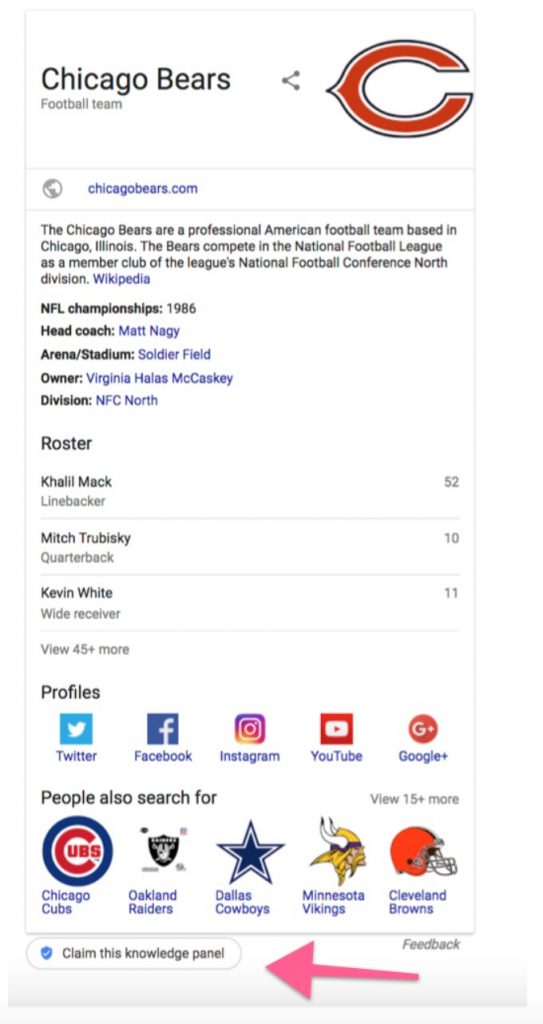
Overall, I refer to this concept as your business’ digital footprint. This footprint is important not only for how you perform in search, but for your opportunity to convert searchers into new paying customers. To determine what this footprint looks like, we have to go out and look at what your business brand search in the “wild” (again referencing my favorite tweet above). The items on page one and in the knowledge panel on the right or above the fold in mobile can give you an idea of what your digital footprint looks like.
Mentions, review profile sites like Yelp, industry specific digital directories are all opportunities or roadblocks to new client conversion. Looking at your branded search and the branded search for your competitors can tell you where you need improvement or have an opportunity for growth.

